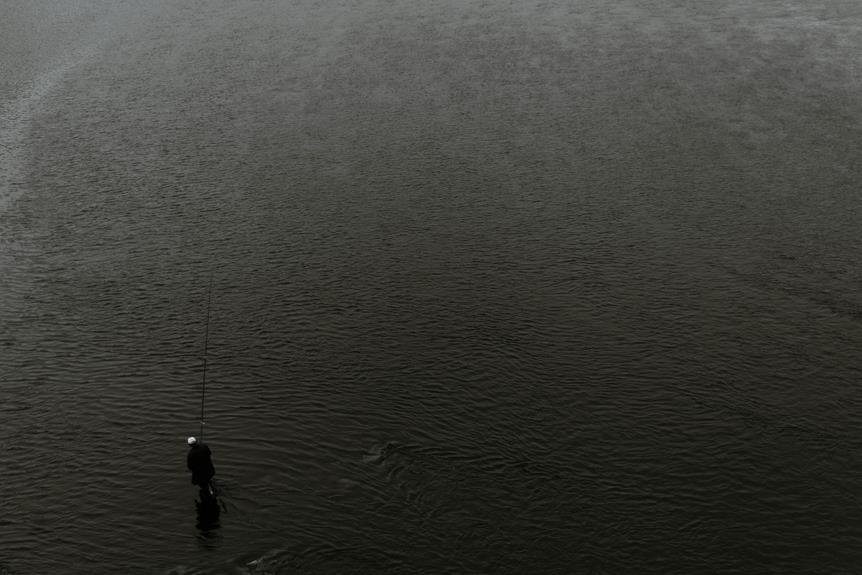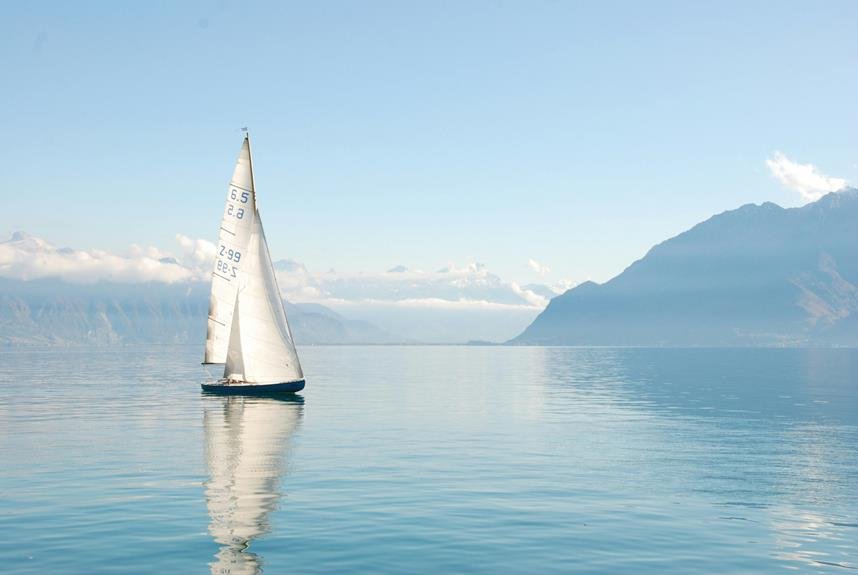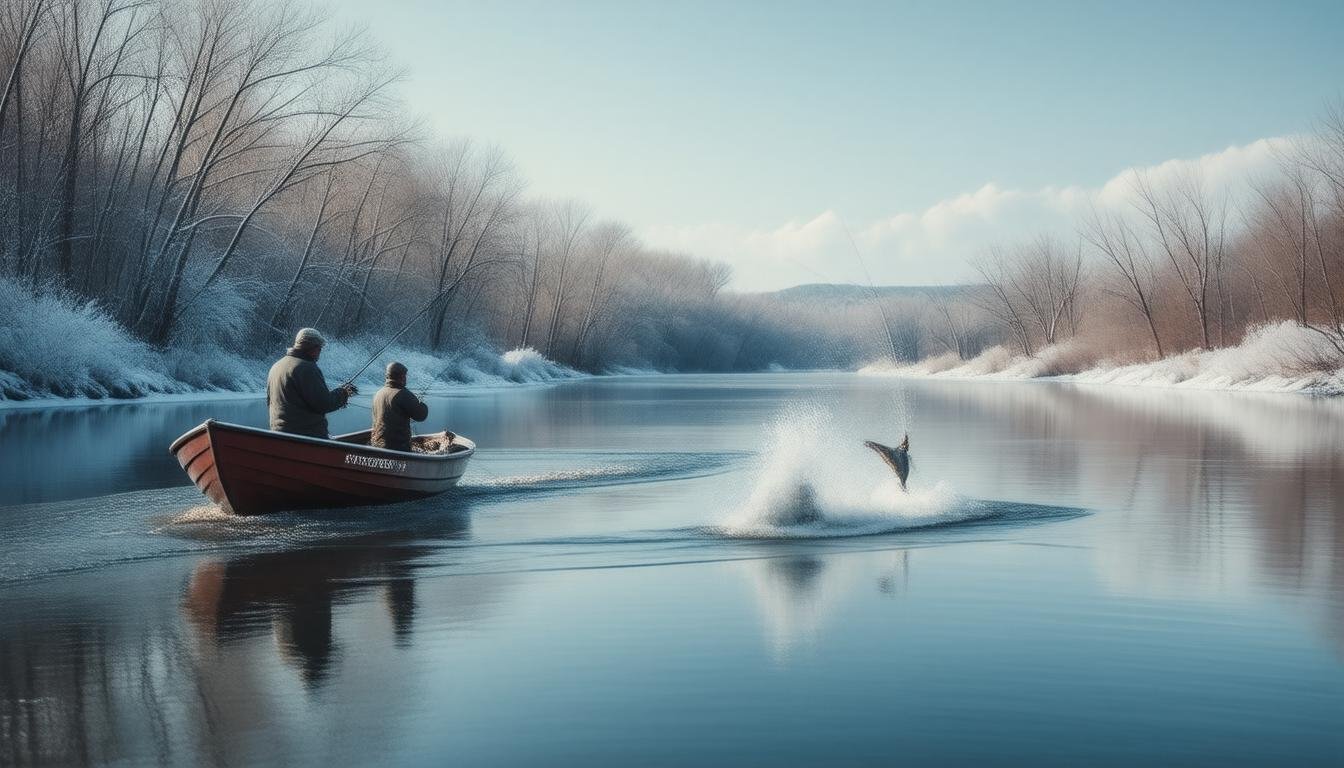Surface fly fishing requires a deep understanding of the subtle dynamics at play on the water's surface, where anglers must master the art of reading water, selecting the right tackle and flies, and presenting their fly in a way that mimics the natural world. A keen sense of fly fishing psychology is essential to read the water and anticipate quarry behavior. By selecting the right tackle and fly, anglers can increase their chances of success. Presenting the fly effectively and mastering the hooking technique are also vital. As you explore the intricacies of surface fishing, you'll uncover the secrets to landing more fish and enjoying a successful day on the water.
Key Takeaways
- A deep understanding of surface dynamics, including water reading strategies and fly fishing psychology, is crucial for success in surface fly fishing.
- Selecting the right tackle, such as a rod with a soft to medium action and a weight-forward floating line, increases the chances of landing a fish.
- Accurate fly selection, based on observation of the water's surface and identification of present insects, is essential for a successful surface fly fishing experience.
- Identifying ideal targets by considering water structure and fish behavior, and pinpointing areas with abundant food sources or suitable habitat, improves fishing success.
- Mastering the art of delivering the fly effectively, with a precise trajectory and smooth landing, and exercising patience to secure solid hookups, is critical for a rewarding surface fishing experience.
Understanding Surface Fly Fishing
Surface fly fishing, an intricate dance between angler and quarry, demands a deep understanding of the subtle dynamics at play on the water's surface. To excel, one must develop a keen sense of Fly Fishing Psychology, reading the water to anticipate the behavior of their quarry. Water Reading Strategies are essential, as the ability to identify subtle changes in current, structure, and habitat can make all the difference. By honing these skills, anglers can increase their chances of success, as they better understand the complex interplay between the water's surface and the fish that inhabit it. A deep understanding of these dynamics allows anglers to make informed decisions, presenting their fly in a way that mimics the natural world, and ultimately, landing more fish.
Choosing the Right Tackle
When it comes to surface fly fishing, selecting the right tackle can make all the difference between landing a fish and coming up empty-handed. Fly rods play a vital role in delivering a delicate presentation, and for surface fishing, a rod with a soft to medium action is ideal. This type of rod will help to cushion the lift on fine fly tippets, reducing the likelihood of break-offs. Line selection is also critical, with weight-forward floating lines being the most popular choice for surface fishing. A 6-weight line is a good all-around choice, but lighter lines can be used for smaller fish and more delicate presentations. By choosing the right tackle, anglers can increase their chances of success on the water.
Selecting the Perfect Fly
Selecting a fly that accurately imitates the natural insects or creatures present in the water is essential to a successful surface fly fishing experience. To achieve this, water observation is vital. Observe the water's surface to identify the types of insects present, their size, shape, and color. This information will guide your fly selection.
| Insect Type | Fly Selection | Water Observation |
|---|---|---|
| Mayfly | Dry fly with upright wings | Look for mayflies on the water's surface |
| Caddisfly | Dry fly with tent-like wings | Observe caddisflies skittering on the water |
| Stonefly | Dry fly with elongated body | Identify stoneflies crawling on rocks near the water |
| Terrestrial | Dry fly with robust body | Note the presence of ants, beetles, or grasshoppers near the water |
| Midges | Dry fly with tiny body | Observe midges hovering above the water's surface
Picking the Ideal Target
As you've identified the right fly to imitate the natural insects present in the water, the next step is to pinpoint the ideal target, taking into account the water's structure and the behavior of the fish you're after. When picking the ideal target, consider the structural elements of the water, such as rocks, weed beds, and drop-offs, which can create ambush points for fish. Observe the fish behavior, noting where they tend to congregate and feed. Look for areas with a high likelihood of fish presence, such as areas with abundant food sources or areas with suitable habitat. By combining your knowledge of the water's structure and fish behavior, you can increase your chances of presenting your fly to a hungry fish.
Delivering the Fly Effectively
By mastering the art of delivering the fly effectively, anglers can substantially increase their chances of enticing a strike from a wary fish. A well-executed delivery involves a precise fly trajectory, allowing the fly to land softly on the water's surface. To achieve this, anglers must consider water resistance, which can affect the fly's descent and presentation. By adjusting the casting angle and speed, anglers can overcome water resistance and present the fly in a natural, enticing manner. A smooth, gentle delivery also helps to reduce the likelihood of spooking fish, allowing them to confidently approach and inspect the fly. By perfecting the art of delivery, anglers can notably improve their success rates and enjoy a more rewarding surface fishing experience.
The Reach Cast Technique
When executing the reach cast, a subtle yet deliberate rod movement allows the fly to settle gently on the water's surface, creating a drag-free drift that can be extended to 20 feet or more. This technique requires precision and control, as the angler must balance the fly rod to achieve a smooth, gentle presentation. Line speed control is essential, as a slow and deliberate cast allows the fly to land softly on the water, reducing the likelihood of spooking fish. By mastering the reach cast, anglers can achieve a natural, drag-free drift that entices even the most discerning fish to take the fly. With practice and patience, this technique can become a valuable asset in any surface fishing arsenal.
The Parachute Cast Technique
The parachute cast, a subtle variation of the reach cast, involves a deliberate upward and backward motion of the rod tip to create slack in the leader, allowing the fly to settle gently on the water's surface. This technique is particularly useful for inducing slack in the leader, thereby preventing drag and ensuring a natural presentation. By mastering the parachute cast, anglers can achieve superior fly control and line management, resulting in a more convincing imitation of a natural insect. This cast is especially effective when fishing adult caddisfly imitations, which often skitter and twitch on the water's surface. With practice, the parachute cast can become an indispensable tool in your surface fishing arsenal.
Mastering the Dead Drift
What distinguishes a successful dead drift from a mediocre one is the ability to present the fly in a completely natural, drag-free manner, allowing it to float effortlessly downstream like a real insect. Mastering the dead drift requires a deep understanding of Fly Fishing Psychology, as remaining patient and focused, resisting the urge to set the hook prematurely, is vital. Surface Tension Dynamics also play a pivotal role, as the fly's buoyancy and the water's surface tension can affect its movement. To achieve a drag-free drift, anglers must carefully observe the fly's behavior, making subtle adjustments to the cast, leader, and fly selection. By doing so, they can create an ultra-realistic presentation that deceives even the wariest of fish.
Fishing for Surface-Feeding Carp
Carp are notorious for their wariness, but when they're feeding on the surface, they can be surprisingly receptive to a well-presented fly, especially during the warmer months when aquatic insect hatches are most abundant. Understanding carp behavior is key to successful surface fishing. They tend to congregate in shallow, vegetated areas where insects are plentiful. When targeting surface-feeding carp, adopting subtle surface strategies is vital. Use a gentle presentation and a fly that imitates the natural insect hatches. A soft, delicate landing on the water's surface is vital to avoid spooking these wary fish. By mastering these surface strategies, anglers can increase their chances of hooking into these elusive creatures.
Reading the Water's Character
When fishing for surface-feeding fish, understanding the water's character is vital to identifying likely holding spots, as fish tend to congregate in areas with specific structural features that provide shelter, food, and protection. Water structure and stream morphology play a significant role in shaping the aquatic environment, influencing the behavior and distribution of fish. As anglers, recognizing and interpreting the water's character, including its depth, flow rates, and substrate composition, is imperative. By doing so, we can identify areas with suitable habitat features, such as pools, riffles, and undercut banks, which are likely to attract surface-feeding fish. By reading the water's character, we can increase our chances of locating and catching these fish.
Setting the Hook With Restraint
Setting the hook with restraint requires a delicate balance between allowing the fish to fully commit to the fly and reacting quickly enough to secure a solid hookup. This pivotal moment in surface fishing demands hook discipline is key. Practicing patience rewards anglers with a higher hookup rate and fewer lost fish. When a fish takes the fly, wait until it turns down, indicating a secure take. Resist the urge to react impulsively, as this can lead to pulled hooks and lost opportunities. By exercising restraint, you'll increase your chances of landing more fish and enjoying a more successful day on the water. Remember, patience rewards, and hook discipline is the key to surface fishing success.
Frequently Asked Questions
How Do I Maintain a Natural Drift When Fishing in Fast-Moving Water?
To maintain a natural drift in fast-moving water, read the current to identify areas with minimal water resistance, then use reach casts or parachute mends to induce slack and prevent drag, ensuring a drag-free drift.
What if I See Fish Rising but Not Taking My Fly?
When fish are rising but not taking your fly, observe their behavior to identify the natural insect they're feeding on, then adjust your fly selection to match the size, shape, and color of the preferred food source.
Can I Use Surface Fishing Techniques in Saltwater Environments?
While many assume surface fishing techniques are exclusive to freshwater, saltwater environments present unique opportunities; by adapting Saltwater Strategies to Coastal Challenges, anglers can successfully employ surface fishing techniques in marine environments, targeting species like bonefish and tarpon.
How Do I Handle a Fish That Breaks the Surface While Taking My Fly?
When a fish breaks the surface while taking your fly, employ landing strategies that prioritize tension control, gradually applying pressure while keeping the rod tip high to maintain a secure hookset and minimize break-offs.
What if I'm Not Getting Any Takes Despite Perfect Presentation?
When your perfectly presented fly remains untouched, it's like a lonely dancer waiting for a partner – futile elegance. Check your line for subtle drag, re-examine fly selection, and reassess the water's nuances to diagnose the issue, then adjust your approach to entice a willing dance partner.
Conclusion
In summary, surface fly fishing is a nuanced and technical aspect of angling that requires precision and strategy. By mastering the techniques outlined in this article, anglers can increase their chances of landing fish. Interestingly, a study by the American Fisheries Society found that surface feeding fish are more likely to strike a fly that matches the size and color of the natural insects present in the water, with a success rate of up to 75%. By understanding the intricacies of surface fly fishing, anglers can experience the thrill of this rewarding and challenging method.









